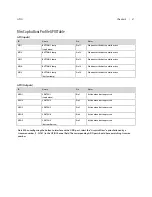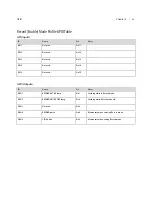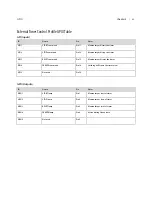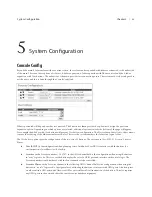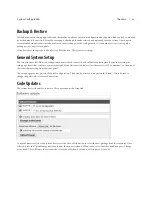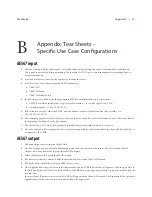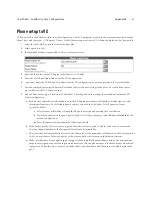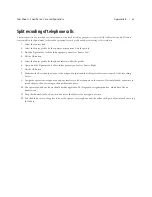
Appendix B |
61
Tear Sheets - Specific Use Case Configurations
Phone setup to VX
VX defines Studios and Shows within its own configuration. These VX properties are used in the communication between the
client (iQx) and the server (VX Engine). The act of the iQx accessing as a client to VX is defined within the iQx Show profile.
1.
Select the Shows link to open the view of the 4 profiles.
2.
Select a profile to edit.
3.
In the middle of the new page will be a Phone Connections section.
4.
Enter the IP address of the VX Engine in the Phone Server IP field.
5.
Enter the VX defined Studio Name from the VX configuration.
6.
(optional) Enter the VX defined Show Name from the VX configuration. A common practice is to leave this blank.
7.
Save the settings by pressing OK button. Reload the show for the new setting to take place. Now any Phone source
types will access this VX Studio settings.
8.
Define Phone Source type (Fixed line or Selectable). These depend on the settings that are defined within the VX
Studio configuration.
a.
Each fixed or selectable interface definition in the VX Engine has a numerical identifier, usually starts at 1 and
increments from there. For Selectable lines to operate, you need the iQ 6-Fader Telco Expansion Frame
(p/n 2001-00284).
i.
Select Sources followed by selecting the Phone source type and pressing the Create button
ii.
Towards the bottom of the new page is Hybrid for Telos phone property, select
Fixed
or
Selectable
for the
needed configuration.
iii.
Enter the numerical identifier in the following text field.
b.
In the Source profile, for Source input property, select the Livewire option (default). Make sure to enter in the
Livewire channel number for the designated Fixed line or Selectable line.
c.
The mix minus will automatically be created and the content of the mixminus will be based on the Source profile’s
Feed to source
property. Refer to chapter 3 of the iQx manual for information on the different options.
d.
Make sure that there are enough Outputs to support the automatically generated mix-minus. Any none defined
outputs are assigned as a pool of auto-generated backfeeds. When a phone source is loaded to a fader, a backfeed
is generated. When the source is removed, the backfeed is brocken down and the output is available again in the
pool.

